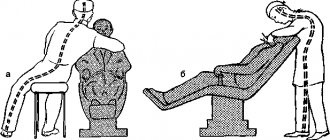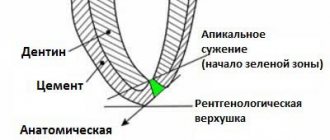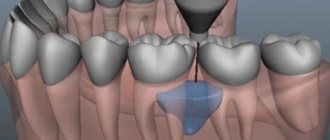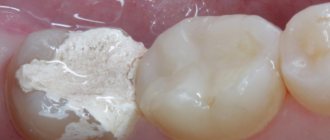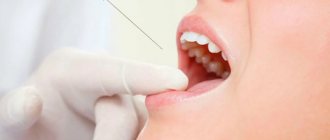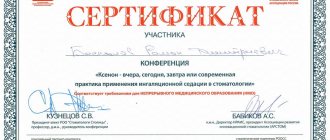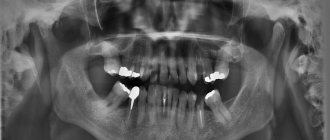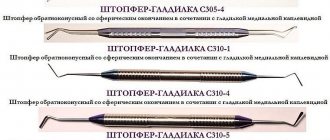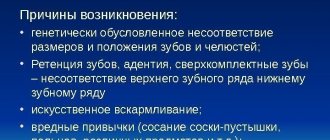Sterilization is the process of complete disinfection of instruments, during which all microorganisms, as well as their spores, are killed.
Everything that comes into contact with the patient’s biological fluids and is used repeatedly is subject to sterilization. Human immunodeficiency virus, hepatitis B and C, malaria, typhus – this is an incomplete list of diseases that are transmitted through blood. Sterilization is necessary to prevent their spread.
At the Karmen-Med clinic, all instruments are subject to mandatory sterilization. Regardless of the manipulation performed, the dentist always has only clean instruments in his hands. Our patients do not have to worry about their health.
How instruments are sterilized in dentistry - to protect the health of patients and medical staff
During dental treatment, a specialist inevitably comes into close contact with the patient, or more precisely, with the mucous membrane and hard tissues of his oral cavity. And here you need to understand that infected patients also seek medical help. At the same time, in his work, the doctor uses special instruments, which, if the rules of asepsis and antisepsis are violated, can become a carrier of dangerous infections. Therefore, adherence to the principles of disinfection in dental practice is the basis. Read further in this article about how dental instruments are sterilized in dentistry.
Modern processing methods make it possible to reduce to zero any risk of transmission of infection.
Medicinal treatment of canals
Medicinal treatment of the canal is carried out with a cotton swab wrapped around a root needle and moistened with an antiseptic solution. Treatment can be carried out using an endodontic syringe. The root canal is washed under moderate pressure, the needle is inserted to the entire depth of the canal. The needle has a small diameter, good flexibility, and has a flat cut on the side surface.
There are conditionally three groups of medicines for medicinal treatment of root canals : rinsing liquids, antiseptic dressings, means for expanding root canals.
An antiseptic for root canals must meet the following requirements: to be bactericidal for microorganisms, not to irritate periapical tissues, not to have a sensitizing effect and not to cause the emergence of resistant forms of microorganisms, to have a rapid effect and penetrate deeply into the dentinal tubules, not to lose its effectiveness in the presence of organic substances, be chemically resistant and retain their activity during long-term storage.
Liquids for washing canals are used for instrumental and final treatment of the canal. They destroy microorganisms, clean the canal walls well from dentinal sawdust, and dissolve the remains of necrotic pulp. This group includes 2% chloramine solution, 0.01-0.03% chlorhexidine solution, 2.5-5% sodium hypochloride solution, chloramine T, 3% hydrogen peroxide solution, iodinol, nitrofuran drugs (furacilin, furazolidone, furagin ), 0.1 solution 1% decamine solution, 0.08-0.15% decamethoxin solution, 30% aqueous urea solution, proteolytic enzymes (solutions of trypsin, chymotrypsin, deoxyribonuclease).
When using hydrogen peroxide, gas bubbles are released, which promote mechanical cleaning of the canal from necrotic tissue and dentin chips. Sodium hypochlorite solution has proven itself well. It has a pronounced bactericidal effect on gram-positive and gram-negative bacteria, fungi, and viruses. In addition, sodium hypochlorite dissolves the organic contents of the canals and the dentin base, which promotes the expansion of the canal. The Septodont company produces the drug "Parkan" with a 3% sodium hypochlorite solution.
Antiseptic dressings are left in the canals between visits. They create conditions unsuitable for the life of microorganisms, reduce pain, reduce the inflammatory process, and stimulate regeneration in the periodontium. Use only after careful instrumentation. These include essential oils (clove oil, sage oil, eugenol, etc.), nonspecific medications from the phenol group (formocresol, cresatine), specific medications (antibiotics, their combinations with corticosteroids, enzymes).
They produce many patented drugs intended as antiseptic dressings in the treatment of pulpitis and periodontitis. “Crezofen”, “Grinazol”, “Cresodent” are used for antiseptic treatment, and if the inflammatory process worsens, they can be left on the turunda for 2-3 days. "Endocal" gel is left for 2-3 days to eliminate acute pain. "Endotin" for antiseptic treatment, to relieve pain due to pulpitis. “Pulperil” has an analgesic and antiseptic effect and is applied on a swab into the cavity or on a turunda into the root canal. Septomik-sin paste is used in the treatment of pulpitis and periodontitis. It is inserted into the canal using a canal filler for a temporary filling. After the pain stops, the canal can be filled. When removed beyond the apex, it promotes the restoration of bone tissue at the site of destruction during periodontitis (zaapical therapy).
Means for expanding root canals . , the drug EDTA is injected into it . EDTA forms complex compounds with calcium in the dentin of the root canal walls, which are soluble in water. Calcium goes into solution, the surface layer of dentin softens, this ensures the passage and expansion of the root canal.
Methodology: After antiseptic treatment and drying of the canal, an EDTA solution is applied to the cheeks of tweezers at the mouth of the canals and pumped into the passable part using a root needle. After 20-30 minutes of cotton wool, the spent complex is removed and a new portion is introduced. Repeat 3-5 times. Then the canal is expanded with a file, removing decalcified dentin with a pulp extractor. The canal is washed.
For this purpose, Largal Ultra, Kanal Plus, Verifix, RC-prep, Tublisid, Kanal-E, Kanal-glide are used.
The main complications during root canal treatment are perforation of the canal walls, breakage of the instrument, removal of the instrument into the periapical tissues, pushing of necrotic masses beyond the apical foramen, irritation of the periapical tissues with high concentrations of antiseptics. To avoid complications, the endodontic treatment of the canal should be strictly followed.
Did you like the article? Share with friends
0
Similar articles
Next articles
- Filling materials for root canals
- Impregnation methods of root canal treatment
- Materials in orthopedic dentistry
- Anatomy of permanent teeth
- Anatomy of incisors
Previous articles
- Disinfection and sterilization of dental instruments
- Teeth whitening
- Vincent's ulcerative necrotizing stomatitis
- Gonorrheal stomatitis
- Noma in the mouth
Add a comment
Basic sterilization methods
Currently, dentistry uses several modern methods of antiseptic and sterilization treatment, which makes it possible to virtually reduce any risk of transmission of infections and viruses to zero. The main ones are described below:
- the mechanical method is wet cleaning of premises, washing of medical staff uniforms and other textile products intended for reusable use, as well as regular ventilation of the premises of the dental center strictly according to the established schedule,
- biological – cleaning surfaces using specialized antimicrobial agents. Weak disinfectant solutions may be used that are not capable of destroying individual strains of bacteria, therefore this treatment is considered superficial and is not suitable for all products,
- physical – processing of tools at high temperatures. This is one of the fairly effective methods, which, however, cannot be used for products not made from heat-resistant materials. This thermal sterilization is carried out dry or steam,
- chemical sterilization - aggressive chemical solutions are used for highly effective disinfection. A proven and guaranteed method of destroying most types of viruses and bacteria. This method is used for products that are in direct contact with wound surfaces and are prohibited from being processed at high temperatures. This cold processing is applicable to products made of plastic, rubber and glass,
- microwave – used for processing products belonging to the categories of low and medium infectious risk. Disinfection is carried out by exposing them to ultraviolet rays. This allows for high-quality and quick disinfection of surfaces that do not come into direct contact with mucous membranes and open wounds.
“Now all dentists take the sterilization of instruments very seriously, especially since most of them are already disposable. The doctor takes them out from a sealed package right in front of your eyes. All these are stories about the risk of infection. Perhaps earlier there was a certain probability of catching something, but definitely not now. I talked to my dentist about this about 5 years ago, he explained everything to me in detail.” Lilya, from correspondence on the 32top.ru forum
Above, we reviewed the methods that are used today to disinfect products in dental practice. Now let's move on to considering the sterilization algorithm.
Stages of sterilization
A full processing cycle consists of several stages. Each of them is very important, so this process needs to be considered in more detail.
Disinfection treatment
A mandatory step for all items that are used more than once. For products made of plastic, ceramics and solid metal, different types of antiseptics are used. Such processing can be carried out manually or using specialized equipment. The products are placed in a special compartment, after which it is lowered into a container with disinfectant liquid.
Pre-sterilization - washing
Then the products are washed in plain, running and distilled water in turn. After this, solid smooth surfaces are cleaned using special brushes, and objects with an uneven coating are cleaned using ultrasound. In the second case, they are placed in a separate container in the appropriate apparatus. Then it is filled with a solution, and the time for the procedure is entered. Upon completion of the process, the products are thoroughly dried in a special drying cabinet.
Packaging if steam treatment is required
Vacuum bags or special machines are used for packaging. Treated items are placed in appropriate sealed containers and sealed. If the clinic has a specialized device, this greatly simplifies the process. This machine houses a single roll of film, which allows you to adjust the length and width of the material.
Final sterilization
Already packaged products are sterilized in an autoclave, for which they are first placed in a special tray so that the packages lie with the paper side up and do not cover each other. The specialist selects the required temperature level and operating mode. After processing is completed, the packages are stored in a special cabinet.
Sterilization of instruments in an autoclave.
Disinfection of instruments used in therapeutic practice
When answering the question about what instruments are disinfected in dentistry, we should immediately say that in the doctor’s office all surfaces are treated at the beginning of the working day. Also, medical staff must clean the dental chair and other surfaces of the equipment used after each patient.
Therapeutic instruments must undergo appropriate multi-stage cleansing. The standard set includes a tray, a trowel, a spatula, an elevator, a probe and tweezers.
Safe chemistry
Disinfection of dental instruments is carried out using physical methods or chemical solutions.
The choice of the former involves the use of boiling. The items are immersed in hot distilled water and boiled for thirty minutes. To enhance the effect, 2% sodium bicarbonate can be added to the boiling liquid. Sometimes the method of exposure to saturated steam, the temperature of which is 110 degrees Celsius, is used. To destroy all pathogenic organisms, the exposure time should be at least 20 minutes. Many large clinics purchase an air sterilizer. In it, disinfection is carried out by exposure to dry hot air, the temperature of which is 120 degrees Celsius. The time of one session is 45 minutes.
The choice of physical disinfection methods has a number of limitations. Such processing of tools provokes the development of metal corrosion, sharp parts quickly become dull, and mirror elements become dull. Only clean instruments without protein or fat contamination can be loaded into the air sterilizer. Therefore, you first have to use a manual processing method. This increases the complexity of the process and time costs.
Chemical disinfection in dentistry is disinfection, which is carried out using a disinfectant (chemical solution). This method is actively used by dental clinics. There is a list of funds approved by the Department of State Sanitary and Epidemiological Surveillance of the Ministry of Health of the Russian Federation. Their use is strictly regulated. Methodological guidelines have been developed and implemented. Using them, medical workers prepare solutions and use them to disinfect work surfaces and instruments.
Chemical solutions with a wide spectrum of action and non-toxic are selected. The disinfectant must have a rapid action, demonstrate resistance to external factors, and have a residual antimicrobial effect. An important component of the choice is odorlessness, good solubility, stability of the formula and ease of use.
Chemical disinfection has one significant drawback. There is always a risk of possible poisoning and the development of allergic reactions in patients and medical personnel performing disinfection. Recently, resistance has been observed in microorganisms. Therefore, the search for new opportunities is always relevant.
The last word in the field of disinfection is the use of autoclaving - temperature treatment at high pressure. This is carried out through the installation of special devices. They generate steam that kills everything, including fungal spores. To increase the disinfecting effect, manufacturers produce autoclaves equipped with a system for removing air and oxygen - components that can protect certain bacteria. The completely evacuated air gives the hot steam greater penetrating force.
Any dentistry has a device for disinfecting impressions of dental products. It is used to disinfect objects used in prosthetics. They are immersed in a closed system. At the initial stage, preliminary cleaning is carried out with soft irrigation, then intensive cleaning is carried out, in which a disinfectant solution is sprayed under high air pressure. This method allows you to treat any, even the most inaccessible places. At the final stage, the loaded material is washed and dried using air spray. A high-quality modern device for disinfecting impressions of dental products and instruments carries out the described procedure in just 12 minutes.
Features of working with endodontic instruments
The vast majority of instruments used in endodontic treatment today are disposable. When using them, specialists are guided by two basic rules:
- after use, the product must be properly disinfected,
- after that it must be sent for disposal.
As for reusable items, after each patient they are immediately sent to a disinfectant solution and usually left there for half an hour. After this, ultrasonic cleaning can be carried out, followed by treatment in an autoclave or oven. The method is chosen based on the type of tool used. After the full cycle, the processed items are sent for storage to specialized equipment, which is available in any modern clinic today.
General purpose dental kits
An important condition for disinfection is to ensure that instruments are not contaminated until the moment of use. For this purpose, medical institutions use special storage rooms for sterile products. These are hermetically sealed cabinets equipped with quartz emitters. To maintain sterility, healthcare workers are guided by the following principles:
- processing of individual dental kits in 3 stages - disinfection, PSO (pre-sterilization cleaning) and sterilization. At the end of the process, the instruments are washed in sterile water (disinfectant solution) and transferred into containers with distilled water using sterile tweezers. Products are stored in closed containers for no more than 3 days, on a sterile table for no more than 12 hours1,
- The tweezers are stored dried in a special tray, covered with a sterile napkin. Each of these tweezers can be used for no longer than 2 hours, the puster (a tool for drying carious cavities) and brush holders are disinfected after each patient,
- gutta-percha points and brushes for restoration are intended for single use,
- carpule metal injectors are processed in 3 stages described above, suction systems are disinfected 2 times a day - after the first shift and at the end of the day,
- tips for saliva ejectors are intended for single use, they must be disinfected before disposal,
- glass slides (for mixing paste, cement and other materials) are intended for single use,
- spittoons - after each patient they are immersed in a disinfectant solution.
Processing of individual dental kits.
For disinfection treatment in dentistry, specialized tools and equipment approved by the Ministry of Health of the Russian Federation are used. The issue of security in general is given particular importance. Compliance with honey institutions established requirements virtually reduces to zero any risk of transmission of infections and viruses between patients and medical staff. Therefore, when you turn to a dental center for help, you don’t have to worry about your health.
1Baranova I., Larionov V. Some aspects of the use of drugs and disinfectants in the security system, 2005.
Normative base
In the Russian Federation, general sanitary rules and standards for organizing their activities apply to all medical institutions. But depending on the specific profile of the medical institution, additional standards are applied to ensure the safety of patients. The requirements for a dental clinic are formulated in the federal law of November 21, 2011 No. 323-FZ, dedicated to the protection of public health and medical care, and in SanPin 2630-10 “Sanitary and epidemiological requirements for organizations engaged in medical activities.”
Changes for 2021
Currently, the main relevant document establishing sanitary and hygienic requirements for the work of dental organizations is SanPiN 2.1.3.2630-10 in the current edition. In connection with its adoption, a number of previously existing rules were canceled. For example, now a separate SanPiN 2.1.3.2524-09 “Sanitary and hygienic requirements for dental medical organizations” is no longer valid.
Since then, the text of the new rules has been repeatedly amended to ensure that its requirements correspond to the current situation in the field of medical care and public health. Their entry into force was due to the adoption of resolutions of the Chief State Sanitary Doctor dated March 4, 2021 No. 27 and June 10, 2016 No. 76. This year, the text of the current requirements for sanitary and epidemiological regulations has not been subject to changes. The introduction of new sanitary and hygienic requirements for dental organizations has also not been announced in the near future. It is not expected that the validity of already canceled documents will be renewed, therefore, for example, the previously abolished SanPiN 2.1.3.1375-03 with amendments for 2021 is unlikely to appear.
Current statuses of sanitary and hygienic rules and regulations
| SanPiN 2.4.3.1186-03, status for 2021 | Active |
| SanPiN 2.6.1.1192-03, status for 2021 | Active |
| SanPiN 2.4.1.2660-10, status for 2021 | Inactive |
| SanPiN 2.1.3.2630-10, status for 2021 | Active |
| SanPiN 2.1.3.2524-09, status for 2021 | Inactive |
| SanPiN 2.1.3.1375-03, status for 2021 | Inactive |

